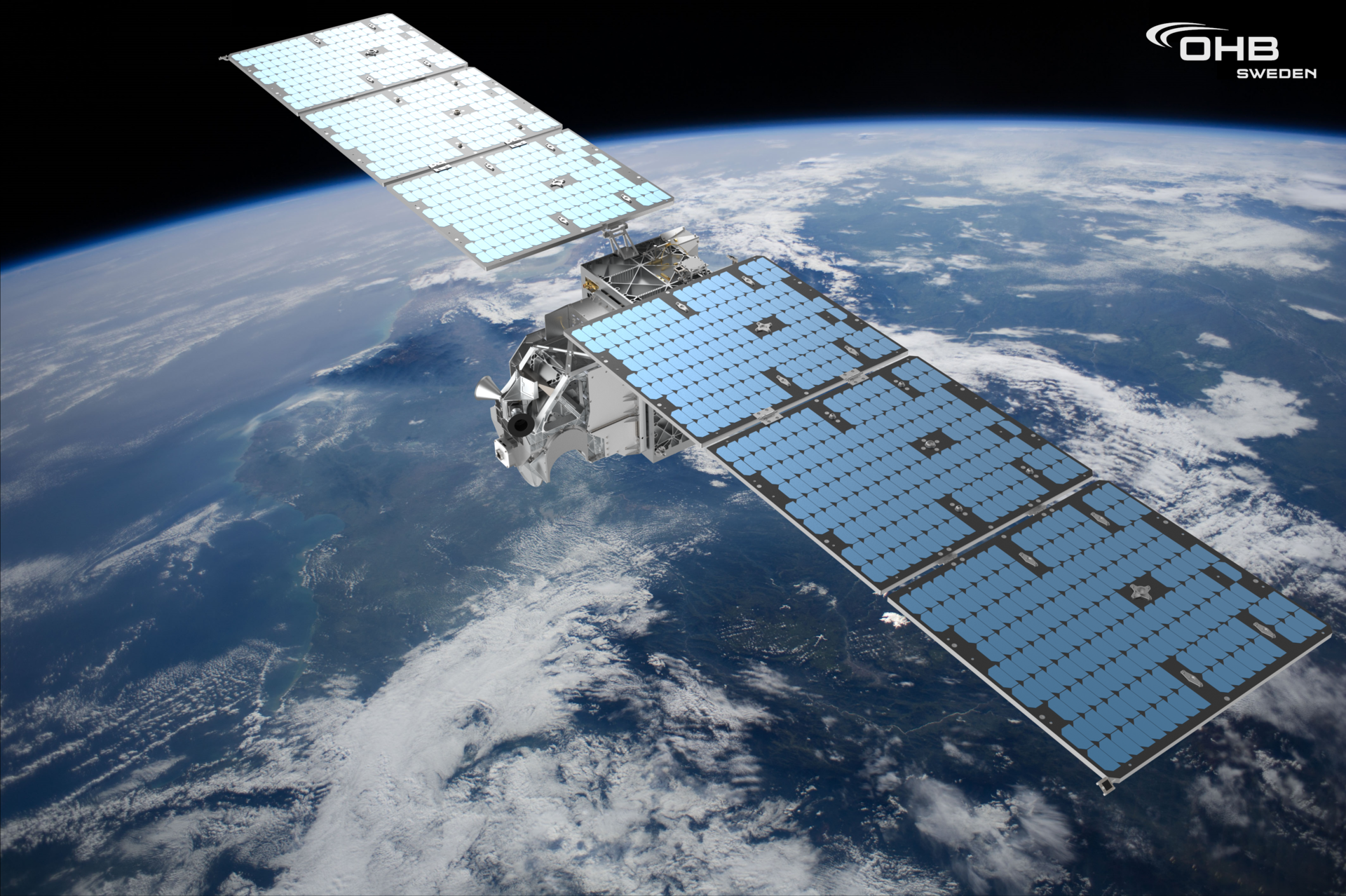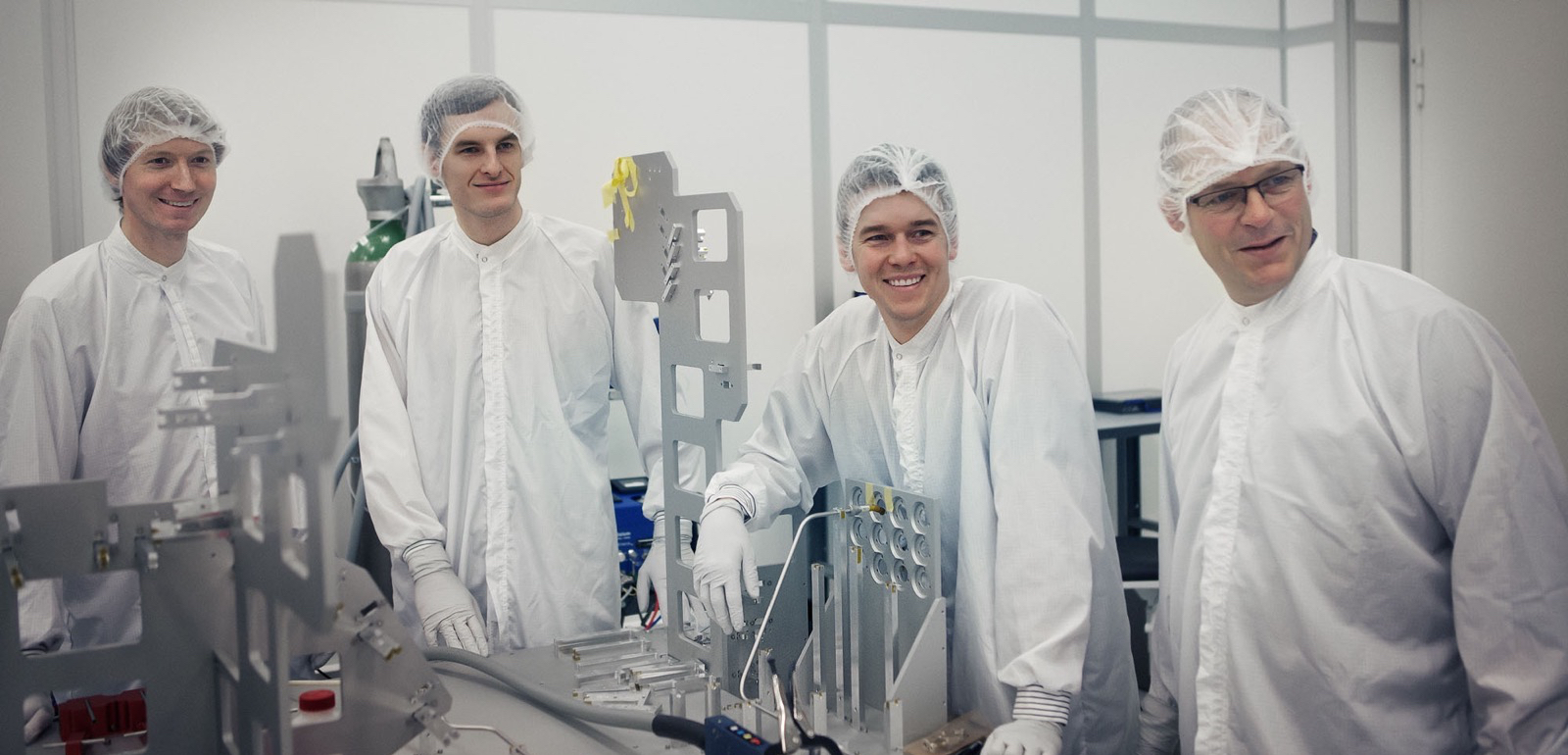OHB Sweden celebrates successful launch of the first Arctic Weather Satellite (AWS)
Better weather forecasts for one of the regions most affected by climate change - AWS is the forerunner of a potential large satellite constellation for observing the Arctic
The new weather satellite was launched on August 16, 21:30 CEST on a Falcon 9 rocket from Vandenberg Space Force Base in California, USA. Shortly afterwards, at 3:06 CEST on August 17, it sent its first signal from space. The communications show that the satellite is in good health and we are now continuing the checkout and preparations for full operations.
OHB Sweden, has developed and built the satellite on behalf of the European Space Agency ESA. To test new concepts quickly and cost-effectively, the "New Space" approach was deliberately chosen. The Arctic Weather Satellite was developed and built on a very compressed schedule. It took only three years between being awarded and launching.
Benoit Mathieu, CEO of OHB Sweden, said: "The fact that our satellite is now in Space and will soon be collecting weather data over the Arctic makes us proud. This has been a great team performance, and I would like to thank the OHB Sweden team and all partners for the good collaboration and ESA for the trust they have placed in our technology. The Arctic Weather Satellite is already the third mission based on our Innosat platform. The success of this project is the best testimony of our capabilities to develop a performant and cost-effective small satellite in a short time frame. We are ready for the new space age”.
Enhancing weather forecasts and climate models
The "Arctic Weather Satellite" is a small satellite, 125 kilos in weight and only the size of a dishwasher. It works at an altitude of 590 kilometers in a polar orbit and measures temperature and humidity in the atmosphere. It is equipped with a 19-channel cross-track microwave radiometer. A rotating mirror collects data from the atmosphere for the sensitive microwave sensor even in thick clouds, storms and rain. These high-resolution soundings of the atmosphere will enable meteorologists to produce better and, above all, more up-to-date weather forecasts in future. The data is also urgently needed to improve global climate models, as the polar regions play a key role in global climate events.
Lack of data from the Arctic
To date, satellite coverage in the Arctic remains insufficient. The large European weather satellites (Meteosat) are positioned in geostationary orbit at 36,000 kilometers and orbit along with the Earth above the equator, meaning they permanently have half of the Earth's disk in view. They cannot cover areas in the higher latitudes, i.e. near our poles they are kind of blind. Other weather satellites, e.g. the European MetOp program and its US counterpart NOAA Joint Polar Satellite System, are in a near-Earth orbit and fly over the polar regions, but their data is not sufficient.
The "Arctic Weather Satellite" that has now been launched and the large constellation planned on its basis called "EPS Sterna" (EUMETSAT Polar System - Sterna) are intended to supplement the existing systems so that a constant stream of data on temperature and humidity is available from the Arctic. Extremely short-term weather forecasts, known as "nowcasting", should then be possible. This is important because an improved weather forecast for the polar regions will also lead to an improvement in global weather reports. "EPS Sterna" would consist of three generations of six small satellites each and is being developed by the European Space Agency (ESA) on behalf of the European Organization for the Exploitation of Meteorological Satellites (EUMETSAT).
“With the launch of this satellite today we are laying the base for a potentially large constellation that will enable scientists to better observe the Arctic and thus collect important data to tackle climate change. On top, this mission shows very clearly how well the New Space approach works. OHB Sweden has developed a satellite in a very short space of time and on budget that sets a new standard in earth observation. Together with our teams and our partners, we are ready for further small satellites of this kind," said OHB CEO Marco Fuchs after the successful launch.
The first step for this constellation has been made with the successful launch of the first "Arctic Weather Satellite".
“I am delighted that AWS is now on track to begin its mission in space. It will soon provide us with important meteorological data, to our weather forecasters who deliver updated forecasts to society 24/7, and to our oceanographers and climate scientists. AWS is also a vital component for the upcoming EPS-Sterna programme, and it will shortly supply us with valuable confirmation of the technical solution for the final decision on the constellation”, says Håkan Wirtén, Director General, Swedish Meteorological and Hydrological Institute, SMHI.
Strong industrial consortium
OHB Sweden is leading the industrial consortium for the Arctic Weather Satellite mission, which also includes Omnisys in Sweden as prime contractor for the microwave radiometer and Thales Alenia Space in France as prime contractor for the ground segment. The industrial team comprises a total of 31 companies, including 14 small and medium-sized enterprises from twelve ESA member states.
About OHB Sweden
OHB Sweden is a provider of complete space missions, satellites as well as spacecraft subsystems. With more than 30 years of proven success from a wide range of space missions in low and geostationary orbit as well as spacecraft for interplanetary missions, OHB Sweden has acquired a first-class reputation offering reliable and innovative solutions to its customers. The key expertise from OHB Sweden lies in small satellites, AOCS and propulsion subsystems.


